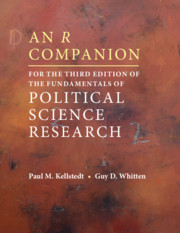Refine search
Actions for selected content:
36807 results in Cambridge Textbooks
Acknowledgement of Country
-
- Book:
- Law and Ethics for Australian Teachers
- Published online:
- 29 July 2021
- Print publication:
- 28 June 2021, pp ii-ii
-
- Chapter
- Export citation
Chapter 7 - Suspensions and exclusions
-
-
- Book:
- Law and Ethics for Australian Teachers
- Published online:
- 29 July 2021
- Print publication:
- 28 June 2021, pp 127-138
-
- Chapter
- Export citation
Chapter 3 - Anti-discrimination within the school context
-
-
- Book:
- Law and Ethics for Australian Teachers
- Published online:
- 29 July 2021
- Print publication:
- 28 June 2021, pp 49-65
-
- Chapter
- Export citation
Preface
-
- Book:
- Law and Ethics for Australian Teachers
- Published online:
- 29 July 2021
- Print publication:
- 28 June 2021, pp xv-xvii
-
- Chapter
- Export citation
Chapter 10 - General ethical responsibilities of teachers
-
-
- Book:
- Law and Ethics for Australian Teachers
- Published online:
- 29 July 2021
- Print publication:
- 28 June 2021, pp 165-187
-
- Chapter
- Export citation
Foreword
-
- Book:
- Law and Ethics for Australian Teachers
- Published online:
- 29 July 2021
- Print publication:
- 28 June 2021, pp v-viii
-
- Chapter
- Export citation
Chapter 13 - Protections afforded to teachers
-
-
- Book:
- Law and Ethics for Australian Teachers
- Published online:
- 29 July 2021
- Print publication:
- 28 June 2021, pp 219-231
-
- Chapter
- Export citation
Introduction: Overview of the Australian legal system
-
-
- Book:
- Law and Ethics for Australian Teachers
- Published online:
- 29 July 2021
- Print publication:
- 28 June 2021, pp 1-8
-
- Chapter
- Export citation
Chapter 1 - Duty of care inside and outside of the school
-
-
- Book:
- Law and Ethics for Australian Teachers
- Published online:
- 29 July 2021
- Print publication:
- 28 June 2021, pp 9-32
-
- Chapter
- Export citation
Chapter 5 - Orders and parenting plans under family law
-
-
- Book:
- Law and Ethics for Australian Teachers
- Published online:
- 29 July 2021
- Print publication:
- 28 June 2021, pp 83-102
-
- Chapter
- Export citation

An R Companion for the Third Edition of The Fundamentals of Political Science Research
-
- Published online:
- 25 June 2021
- Print publication:
- 10 June 2021
-
- Textbook
- Export citation
Part 3 - Global health into the future
-
- Book:
- Health Promotion
- Published online:
- 29 July 2021
- Print publication:
- 25 June 2021, pp 205-265
-
- Chapter
- Export citation
8 - Evaluation – how to measure what works
- from Part 2 - Effective communication
-
-
- Book:
- Health Promotion
- Published online:
- 29 July 2021
- Print publication:
- 25 June 2021, pp 175-204
-
- Chapter
- Export citation
Acknowledgements
-
- Book:
- Health Promotion
- Published online:
- 29 July 2021
- Print publication:
- 25 June 2021, pp xiv-xiv
-
- Chapter
- Export citation
7 - Understanding and using media in health promotion
- from Part 2 - Effective communication
-
-
- Book:
- Health Promotion
- Published online:
- 29 July 2021
- Print publication:
- 25 June 2021, pp 147-174
-
- Chapter
- Export citation
1 - Influences on health
- from Part 1 - Health promotion fundamentals
-
-
- Book:
- Health Promotion
- Published online:
- 29 July 2021
- Print publication:
- 25 June 2021, pp 3-27
-
- Chapter
- Export citation
Index
-
- Book:
- Health Promotion
- Published online:
- 29 July 2021
- Print publication:
- 25 June 2021, pp 266-270
-
- Chapter
- Export citation
Case study boxes
-
- Book:
- Health Promotion
- Published online:
- 29 July 2021
- Print publication:
- 25 June 2021, pp x-x
-
- Chapter
- Export citation
Contents
-
- Book:
- Health Promotion
- Published online:
- 29 July 2021
- Print publication:
- 25 June 2021, pp v-ix
-
- Chapter
- Export citation
9 - Health promotion needs and challenges
- from Part 3 - Global health into the future
-
-
- Book:
- Health Promotion
- Published online:
- 29 July 2021
- Print publication:
- 25 June 2021, pp 207-231
-
- Chapter
- Export citation
